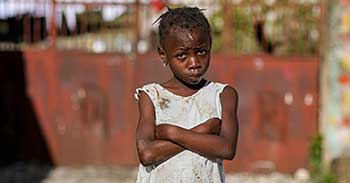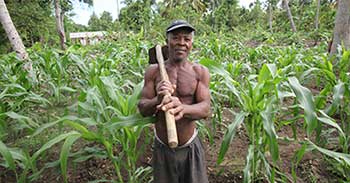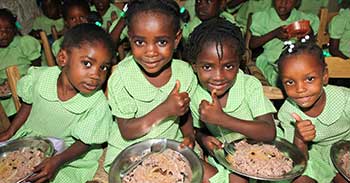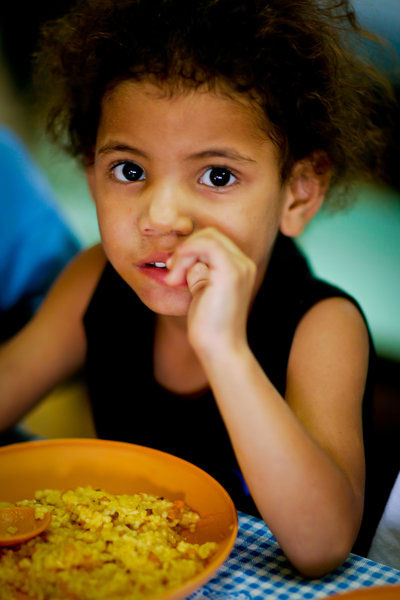One of our board members recently traveled to Indonesia on a Mission Trip with Grace Community Church; although Star of Hope no longer works in Indonesia we thought to share the article as a blog. Some text changes have been made for the protection of individuals home and abroad.
So our guest blogger is D & J Williams.
THE INDONESIA TIMES
Tuesday May 1, 2013
Great Bend, KS. Grace Community Church mission team returned to central Kansas late Tuesday evening, the 23rd of April to cold temperatures and snow on the ground after experiencing hot, tropical weather on the big island of Sumatra, Indonesia for eight days. Culture shock and weather shock were evident on all their faces!
Team members commented on their exhaustion after spending close to 40 hrs in transit from their hotel in Pekanbaru to their homes in Kansas. The transit included flights from Indonesia to Singapore, Singapore to Tokyo, Tokyo to Minneapolis/St. Paul, and from there to Kansas City, culminating in a four hour van ride home to Great Bend.

Team members.
The in-country time was exhilarating, humbling, and eye-opening! As with many third-world countries, Indonesia is a country of contrasts with abject poverty side by side with wealth and affluence. For the most part, the team saw the poverty and spiritual darkness of the country, the largest Muslim country of the world. Many of the people are Muslim because they were given that distinction at birth and their religion is a mixture of Islam, animism, and superstition. The goal of the short-term mission team was to observe the work being done. Also the team was able to participate in some of the "platforms" or on-going activities, the work is slow and tedious, and requires much patience.

Team member JW stands to the side of one of the Reading Posts which are placed in schools and homes. Local missionary team members, like Maya, visit these posts weekly and read to the students. This develops the relationships from which faith discussions will hopefully follow.
After visiting four Reading Posts and an English school which also had a Reading Post, for the first part of the trip, the team was able to travel to West Sumatra to experience the culture of the Minangkabau people group. The team stayed in Bukittinggni, Indonesia where they visited local tourist attractions and markets. The goal there was to engage locals in conversations during which discussions of faith might be confronted.
The three-fold aim was to learn to "live out loud" as a Christian in a Muslim world, learn how to start spiritual conversations with a Muslim, and learn how to point them to the glorious Christ!

A row of shops outside a tourist attraction.
One day the team spent in the local shops and markets of Bukittinggni, seen above and below, and the next day was spent at lake Maninjau, a nearby crater lake in the mouth of an extinct volcano. Rice production and fish farming are the local means of income here in West Sumatra, while in Pekanbaru the economy revolves around petroleum oil and palm oil production.

A typical market scene. Here a woman is roasting bananas over a charcoal fire.
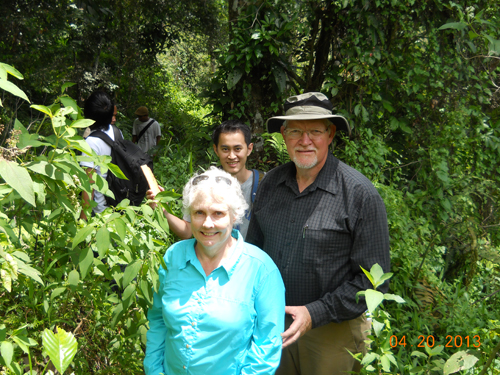
Team members J & D stop for a breather while on a hike through the jungle to a waterfall. Yu Chung, a local team member from New York, looks on from behind.

Rice production and fish farming are two of the local industries in West Sumatra. Here the rice paddies can be seen in front and the fish farming "pens" in the waters of a crater lake just beyond the trees.
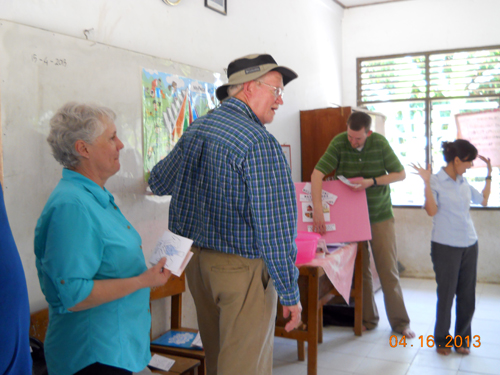
DW teaching a lesson on good eating
habits and nutrition with help from Jonathan on the flannel graph and Maya as the interpreter.
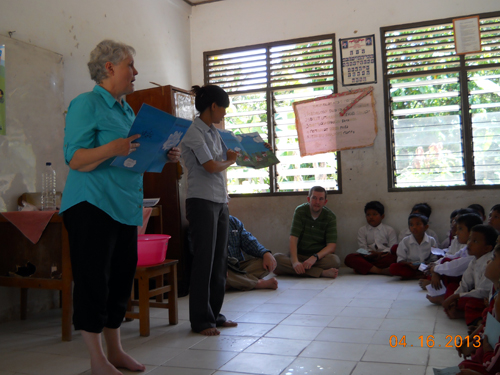
JW reading a book about a little cloud and his imagination showing the children that their imaginations while reading a book can take them anywhere. Maya interprets the English for the children.
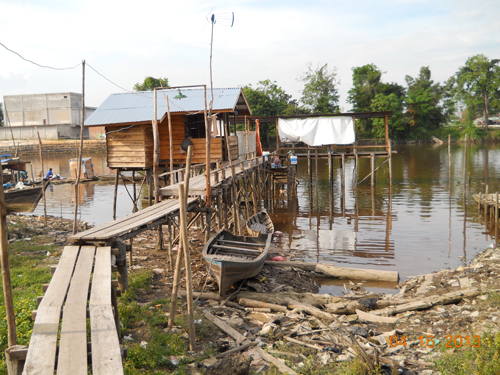
This river water was used as the local bathroom, water for dishes, drinking, and laundry and only 20 yards from one of the Reading Posts we visited.
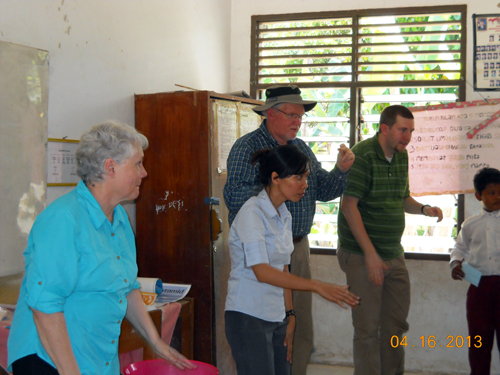
Team members J, M, D and J doing the motions of mimicking a rain shower after Jan had read the book about a cloud.
We thank all of you, our supporters, for both the financial support given to allow us to take this trip and also for the abundant prayer support. We truly felt the presence of your prayers while we were traveling and in Indonesia. For Jan and me, we were kept from sickness and any harm while on hiking trails, traveling on the roads, and sampling the local cuisine. We are convinced this was due to the many prayers being offered on our behalf. Our continued prayer request is for you to pray for the Unreached People Groups (UPGs) of Indonesia and for the national church planters and their families as well as for the missionary families that team with them to take the Gospel of Jesus Christ to these people living in a spiritually dark country.
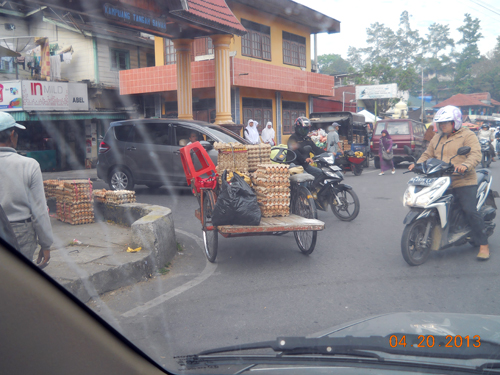
Morning egg delivery. Note the jumble of cars, motorcycles, and pedestrians.

